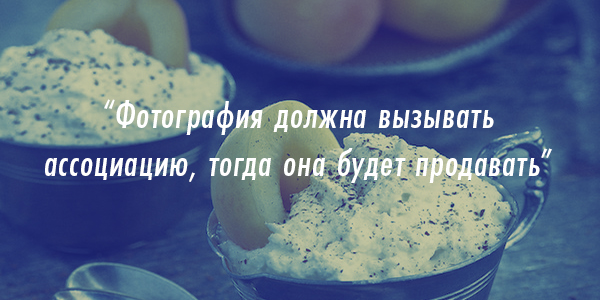Like many Ukrainian photographers, I came into the profession by accident. Just in the hands appeared DSLR camera Canon 350d, and I, imagine myself a specialist, went outside to shoot. There were not any courses at that times and I learnt everything by myself. Workshops and Photo schools appeared little later.


I photographed everything, gradually throwing that I’m not interested in. I began to shoot food in 2010 – a friend asked me to shoot menu for the restaurant. I agreed, but the result terribly disappointed me. Then I began to surf in the Internet, inspire by Pinterest, trying to figure out what I’m doing wrong.

About half a year during all the free time I shot the food, until I realized that I was really fascinated.
I’ve always wanted to travel and to get orders abroad I sent more than a thousand letters. Initially invited to Hong Kong and eventually I was invited to various restaurants around the world. Now, wherever I went, trying to find a couple of orders, so as not to lose time.

The approach to the food-photography abroad and here is very different. Ukrainian photographers love to surround food with unnecessary items, and then the main task abroad is to simplify the composition, so that nothing would distract from the dish.
There are pictures that I want to hang on the wall and admire, and there are pictures that have to “sell”. So the task of the photographer is to distinguish these two concepts.
The photograph must evoke associations, and then it will sell. Olivier, for example, does not look appetizing, but if you put it on New Year’s table, it will look completely different, and you will want to eat it. Before shooting unknown dishes I try to learn about them as much as possible to see what associations they evoke in people. I ask chefs about it and then shoot.

The first order to shoot at the Michelin restaurant I got quite unexpectedly. One of the potential customers in Singapore saw my Check-in in the Michelin restaurant and thought that I worked there. I did not deny, but when he asked to see the pictures, I had to get out. I didn’t want to say the truth, and I began to look for way to one of the best chefs in the world. Fortunately, we had a mutual friend, who gave me the number of Hideaki Sato. I called at the right time – he just introduced new dishes on the menu and asked me to shoot it. It was very exciting. I came to shoot for half an hour before the start, I was really nervious, my hands shakes and I can’t took the chef’s photo! Then I was afraid of him and ask to change the position, be different.
Now I understand that Michelin Chefs are the same people, with their fears. I do not worry anymore.


All Chefs are special, not only with Michelin Star. I know restaurant where you can’t eat. And I don’t understand how they get the star. And there are some unknown Chefs, who cook as God, you are ready to eat everything together with your hands.

Sometimes food photographers need to cheat to make their work easier. I few times I had to deceive the viewer. When it was necessary to shoot the panna cotta with 60 kinds of toppings, we cooked a cliché made from milk and gelatine, and each time put it in the form with different kinds of toppings. We get, washed, poured a new topping, shot – and so 60 times.
After-touch of photos in the food is almost never used. If the chef cooks from the right products and doing it well, after-touch comes down to color correction.

I shoot on the EOS 5D Mark III, and use two lenses: tilt shift 90 mm and macro 100 mm. The first allows you to increase the depth of acutance to shoot at close most of the field was in focus. The second is great for food photography. I used to think that I like Canon, because it’s my first reflex camera. But it’s not that. This is a simple and intuitive camera, all the functionality in one wheel. Another reason is a range of lenses, which have no other brands. For example, 135 mm. He shoots great people and food. Great for those who work in different genres. I recommend it for beginners.


On the last trip to Europe I took a SLR Canon EOS M3. In size it is no more snapshot camera and takes as an entry-level SLR camera. Lightweight, compact, it does not draw the neck – great for travel.

Now I’m blogging about food and travel Food’n’Chef, in plans – to release recipe books. Over the years, I gathered enough materials. A month ago, I shot a book about Ukrainian dumplings – 36 species. A year ago, I have released pocket book about Odessa snacks. I looked for recipes in Odesa for six months. This is the first part, the second coming soon, and it will be a complete book.
See the original article here.



One Comment